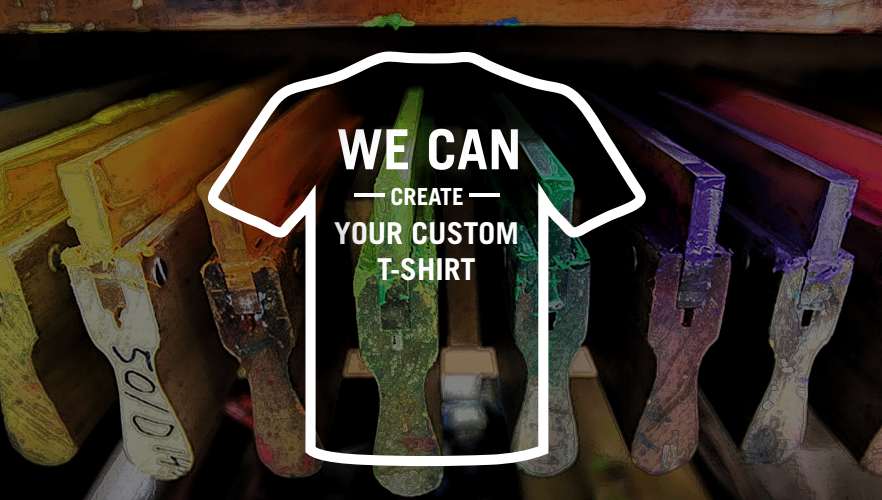Display Printing Uncovered: Every Little Thing You Need to Learn About T-Shirt and Garment Printing Techniques
Screen printing is an interesting approach that incorporates art with strategy, using endless opportunities for creativity. Ready to check out the important aspects that make display printing an art kind?
The Essentials of Screen Printing: How It Functions
When you dive right into display printing, you'll find it's both a scientific research and an art. At its core, display printing entails developing a pattern, or screen, that allows ink to pass through only in specific areas (screen printing kit). You start by choosing your style and preparing your screen with a light-sensitive solution. As soon as you subject this emulsion to light, it hardens, leaving your design as a negative space.
Setting the display over the material, after that make use of a squeegee to press ink with the screen onto the garment. Each action is vital, and grasping them will certainly raise your display printing skills, transforming straightforward garments into special, meaningful items.
Kinds Of Display Printing Techniques
When you grasp the essentials of screen printing, it's time to explore the various strategies that can elevate your designs. One preferred approach is standard screen printing, where ink is pressed through a stenciled screen. This method is great for strong, lively colors. Then there's water-based ink printing, which offers a softer feel and is green, yet it needs a various strategy to healing.
If you're going for fine information, think about discharge printing. This technique eliminates color from the material, leaving a soft, vintage look. An additional choice is plastisol printing, known for its resilience and dazzling shades, making it a preferred for many brand names. Experiment with halftone printing to produce slope effects and elaborate designs. Each method has its one-of-a-kind beauty, so don't think twice to attempt them out to discover what suits your style best!
Essential Tools for Display Printing
To achieve spectacular outcomes in display printing, having the best tools is basic. You'll need a tough display printing framework, which holds the mesh that transfers your layout onto the garment. Next, spend in high-quality mops; these are crucial for applying ink equally across the display.
Selecting the Right Inks and Products
When choosing inks and products for screen printing, you require to take into consideration the sort of ink that works ideal for your job. Think of fabric compatibility to assure your styles look last and excellent lengthy. Likewise, explore environment-friendly ink choices to make your printing procedure much more lasting.
Kinds Of Screen Inks
Picking the ideal screen ink is crucial for achieving vibrant, durable prints that fulfill your project's needs. There are several kinds of screen inks to take a look at. Specialty inks, such as metal or glow-in-the-dark, can add unique results to your styles.

Fabric Compatibility Considerations
Recognizing material compatibility is essential for achieving premium screen prints, particularly because various products react uniquely to different inks. Always test your inks on example fabric to ensure they stick appropriately and preserve shade integrity. Furthermore, maintain in mind that fabric weight and appearance can affect the final end result, so selecting the ideal ink and product combination is essential for your job's success.
Eco-Friendly Ink Options
Green inks are becoming a preferred selection for display printers that want to reduce their ecological effect while preserving high quality. When selecting inks, take into consideration water-based inks, which are much less hazardous and simpler to cleanse up compared to conventional solvents.
Additionally, search for inks made from renewable energies, such as soy or vegetable-based alternatives. By picking the ideal inks and materials, you'll not just create stunning layouts yet also add to a more sustainable printing procedure. Make the button, and your prints will certainly mirror your dedication to the atmosphere!
Preparing Your Design for Screen Printing

File Layout Demands
To assure your style looks sharp and dynamic on material, you'll need to pay close focus to file layout requirements for screen printing. Make certain your style has a clear background to stop undesirable white edges on your prints. Maintain color settings in mind; CMYK is standard for display printing, so convert your RGB creates accordingly.
Shade Splitting Up Methods
Shade separation is a crucial action in preparing your design for screen printing, and grasping it can considerably enhance your print quality. You'll require to damage your design into private colors, as each color needs a different screen throughout printing. Start by determining all the shades in your layout and develop layers for each one. You can utilize software like Adobe Photoshop or Illustrator to isolate and different shades properly. Be certain to save each layer as a separate data, generally in a style like TIFF or PSD. This accuracy not just assures accurate color representation however likewise simplifies the printing procedure. By focusing on shade splitting up, you'll accomplish specialist and vibrant results in your screen-printed garments.
Resolution and Dimension
Accomplishing the very best cause display printing starts with assuring your style has the ideal resolution and size. Preferably, your art work must be at least 300 DPI (dots per inch) for sharp, clear prints. Your last product might look pixelated and less than professional. if you utilize lower resolution.
When it comes to dimension, consider the dimensions of your print location. Design your art work to match the final print size, ideally developing it in the actual measurements you'll be printing. By doing this, you'll prevent any type of unexpected scaling problems.
Always examine your style in both vector and raster formats. Vector graphics can be scaled without shedding quality, making them perfect for screen printing. Preparing appropriately will guarantee your layout looks impressive on every garment!
Step-by-Step Screen Printing Process
Screen printing is a vibrant process that allows you to create vibrant layouts on numerous surfaces. To get started, you'll require a screen, emulsion, and your selected ink.
After cleaning out the unexposed solution, your screen is all set. Establish it up on your printing surface area and straighten your garment underneath it. Put ink onto the display and use a squeegee to push the ink through the stencil onto the material. Raise the display thoroughly and let the print completely dry. Lastly, treat the ink utilizing warm to ensure durability. That's it! You have actually efficiently display published your layout.
Tips for Effective Screen Printing Projects
While you're diving into your screen printing tasks, keep in mind that prep work is key to success. Start by collecting all your products-- inks, squeegees, garments, and displays. A clean workspace assists stop unwanted mistakes, so clean up before you begin.
Following, confirm your artwork is high-resolution and appropriately sized for your garment. Evaluate your display for appropriate exposure and tidy it completely to prevent smudges. When blending your inks, comply with the producer's standards to achieve the best uniformity.
During printing, use even pressure with your squeegee for regular results. Do garment printing not rush; take your time to validate each print meets your standards. After printing, let your garments completely dry entirely prior to taking care of or packaging them.
Lastly, constantly maintain an example of your benefit future recommendation. By doing this, you can assess your development and boost your techniques with time. Pleased printing!

Frequently Asked Questions
How much time Does It Take to Establish a Screen Printing Work?
Setting up a screen printing work typically takes around 30 minutes to an hour. You'll prepare the displays, mix inks, and readjust the press. The moment varies based upon intricacy and experience, so remain arranged!
Can I Publish on Different Textile Keys In Making Use Of the Exact Same Strategy?
Yes, you can print on various fabric kinds utilizing the same method, but you'll require to readjust your inks and setups. Some materials soak up ink in different ways, so experimenting guarantees the most effective results for each and every product.
What Prevail Mistakes to Avoid in Display Printing?
When display printing, prevent usual errors like making use of the incorrect ink, overlooking correct exposure times, or missing pre-press checks. Constantly check your setup and preserve clean screens to assure high quality outcomes each time.
How Can I Effectively Clean and Preserve My Display Printing Tools?
To effectively clean and preserve your display printing tools, you should frequently clean screens with suitable solvents, inspect mops for wear, and guarantee all devices are saved dry and dust-free. Consistency stops expensive fixings and enhances efficiency.
Is Screen Printing Eco-friendly Contrasted to Other Approaches?
Screen printing can be a lot more eco pleasant than various other approaches, especially if you use water-based inks and eco-conscious materials. By choosing sustainable materials and methods, you decrease waste and reduce your effect on the earth.
Screen Printing Uncovered: Everything You Need to Know Concerning T-Shirt and Garment Printing Methods
At its core, screen printing involves developing a stencil, or screen, that enables ink to pass through just in details locations. Setting the display over the textile, after that utilize a squeegee to push ink through the display onto the garment. One prominent technique is conventional display printing, where ink is pushed through a stenciled screen.When choosing inks and materials for screen printing, you require to take right into account the type of ink that functions ideal for your task.